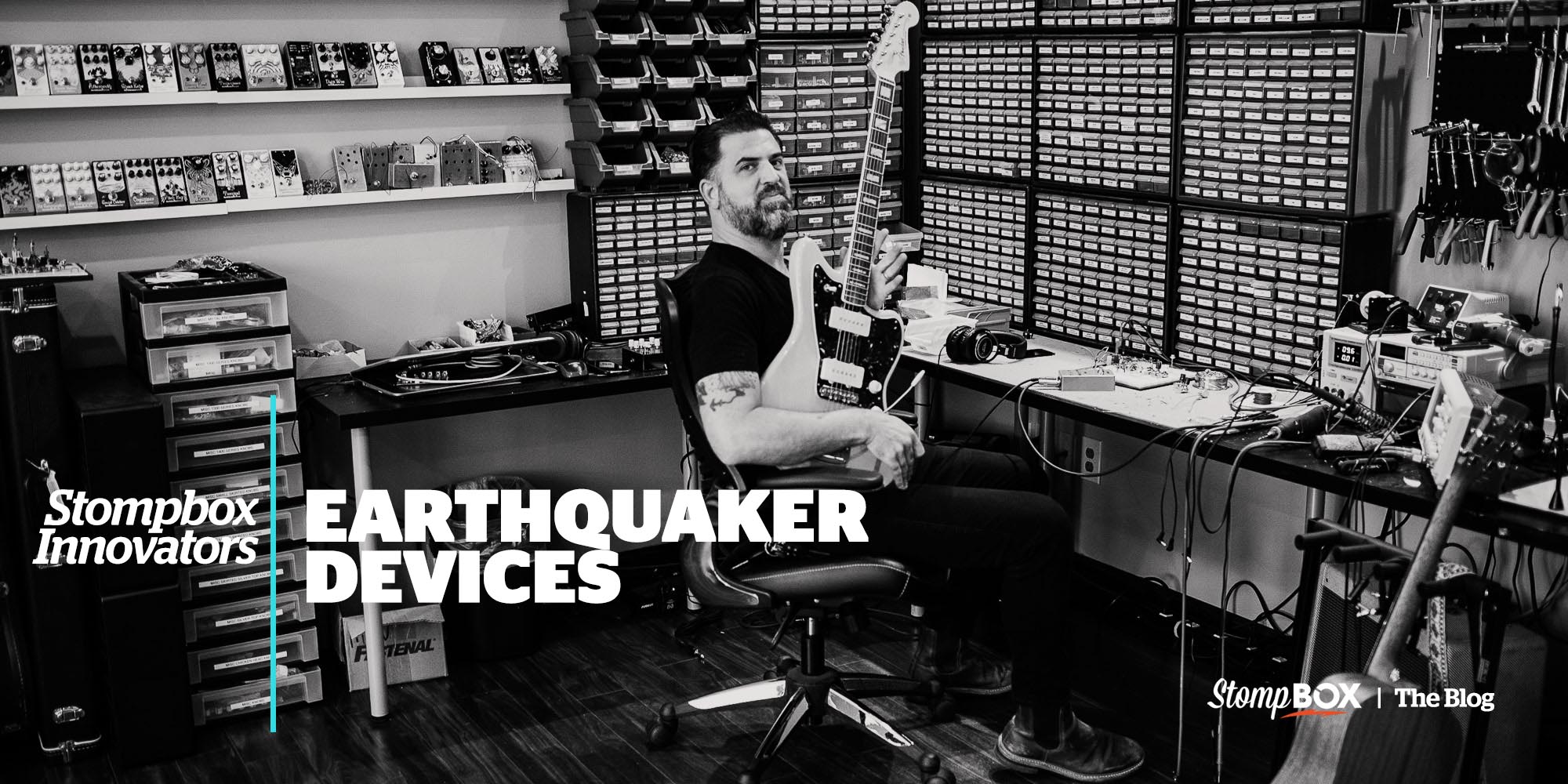Earthquaker Devices | Stompbox Innovators
Akron, Ohio, the city that launched the careers of artists like Robert Quine (Richard Hell and the Voidoids, Lou Reed), Devo, and the Black Keys, is also home to EarthQuaker Devices, one of the pedal scene’s more idiosyncratic builders. Akron may be an “idyllic post-apocalyptic wasteland metropolis,” as the company notes on their website, but it’s also a place that seems to inspire unfettered creativity.
Jamie Stillman, an Akron-area guitarist and tinkerer, founded EarthQuaker in 2004. His initial inspiration came after repairing a broken DOD 250 Overdrive. He became pedal obsessed, sold his early creations on eBay, and eventually released his first production-run pedal, the Hoof, in 2007. Stillman was the company’s only employee in the early years—although his wife, Julie, helped out with enclosure assembly after work (she’s now the company’s CEO)—and hired his first employee once the company started to take off. EarthQuaker grew, and today is a large operation with a full catalog of designs. The company also recently launched an archival video series, Show Us Your Junk, which documents the incredible gear lurking in closets and effects racks of various artists.
We had a great discussion with Stillman about his thoughts on clones, through-hole versus surface mount, digital versus analog, building everything in-house, and how some of his employees still show up to work in their pajamas.
When did you start building pedals and EarthQuaker?
I really started both things, building pedals and EarthQuaker, by accident. I repaired a broken pedal that I had—a DOD 250 Overdrive—and I had an old, late ‘70s one. I really liked the way it sounded, but it broke. I bought a replacement for it and it didn’t sound the same. I looked up the schematic for it and found a website called General Guitar Gadgets, it was like a DIY project website. I don’t know exactly why I understood the schematic, but my background in graphic design probably helped.
You didn’t have a background in electronics?
No. I had a background in tinkering. I fixed that pedal, got excited, and built a clone of it. It worked, and that was pretty much it. At that point, I studied all those DIY sites like GeoFX, AMZ, that’s Jack Orman’s thing. The book, Electronic Projects for Musicians (Craig Anderton). They’re all simple, guitar-oriented, electronics websites and books that explain electronics to dummies. That’s pretty much my background entirely. I mean even still, 15 or 16 years later, I still resort back to those books and websites eventually for something.
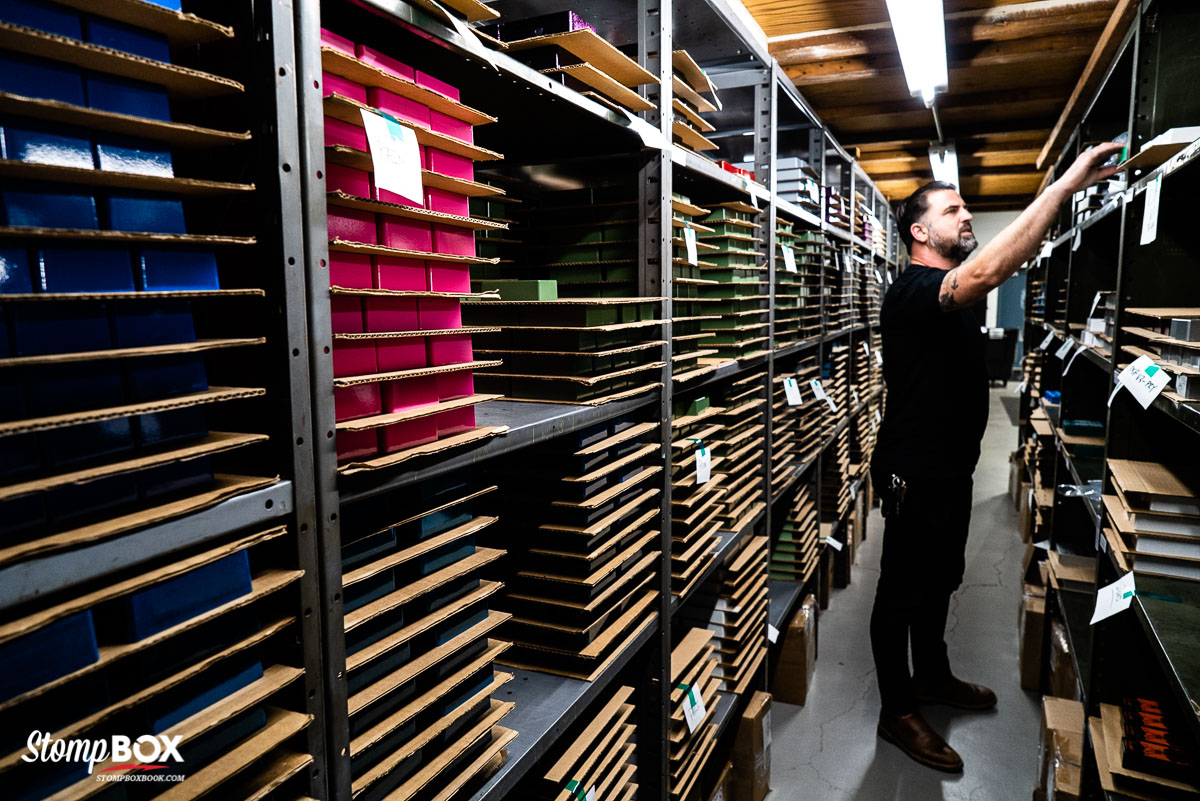
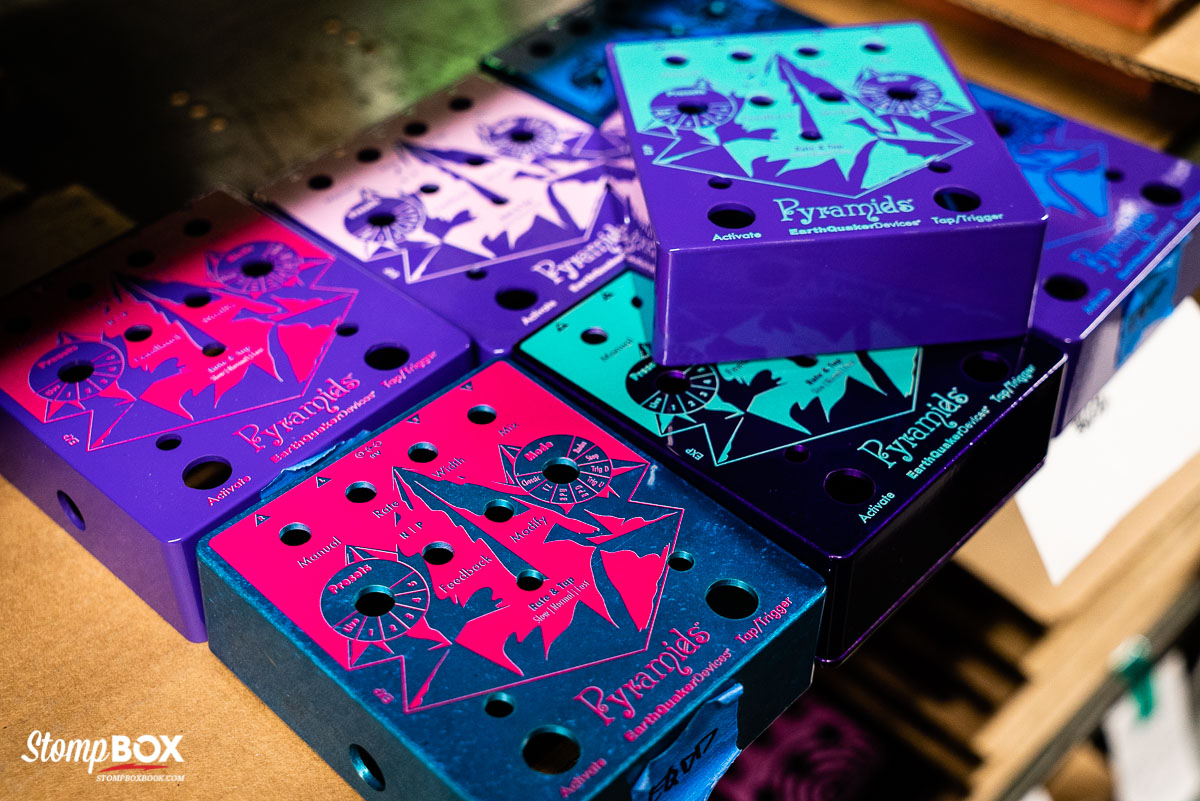
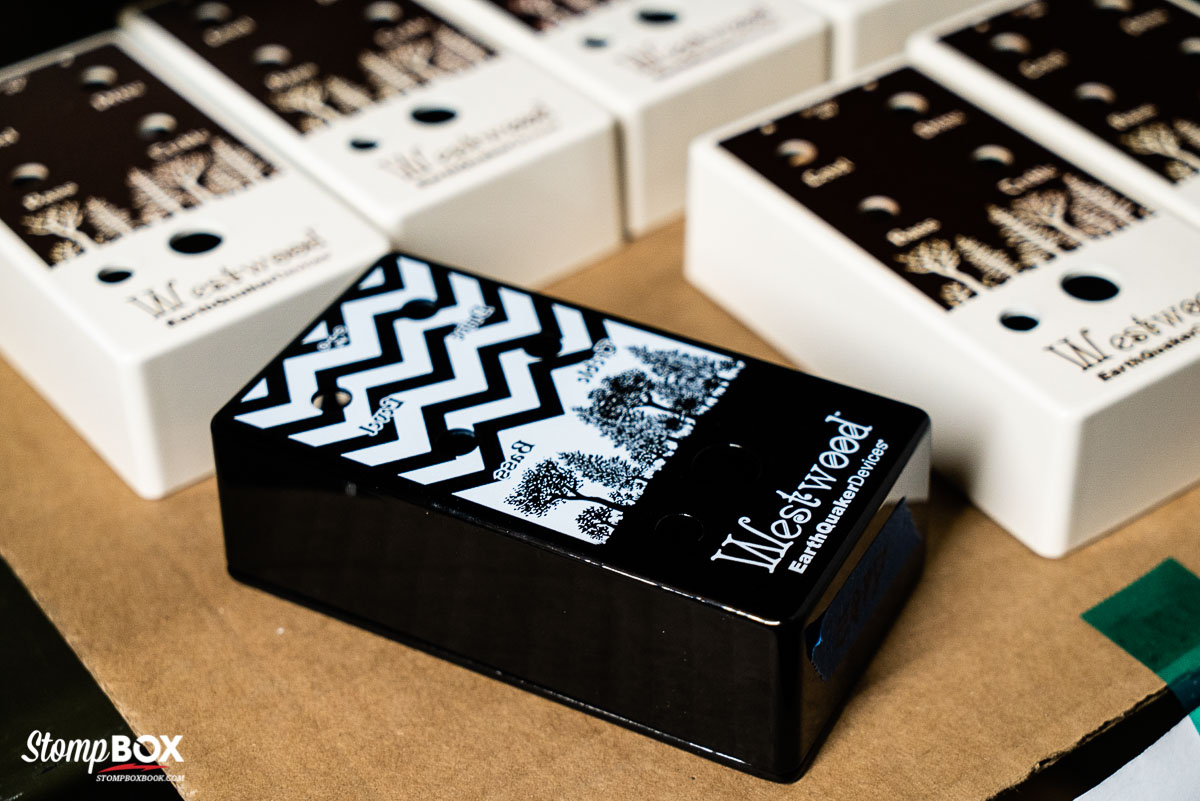
Was there a pedal or artist that put the company on the map?
Definitely the Hoof Fuzz. The first three pedals that we made were the Hoof, the Disaster Transport Delay, and the Tusk Fuzz. There were a couple other things like the Black Eye and then a Spectre Overdrive, which I didn’t make too many of. I had a vision for what the pedals would look like and I wanted to try to sell them. The Hoof was pretty much the only cloned circuit. It’s based on a green Russian Big Muff, but it’s pretty far removed from it. At the time, I was working for the Black Keys as a tour manager and tech, and I made one for them. I believe they were using it at a show, and someone from Harmony Central—back when that was active—posted a video clip of it and asked what it was. I feel like that was the first time people took interest. Prior to that I posted some pedals up on eBay. It didn’t look like EarthQuaker stuff looks now, but it did generate interest.
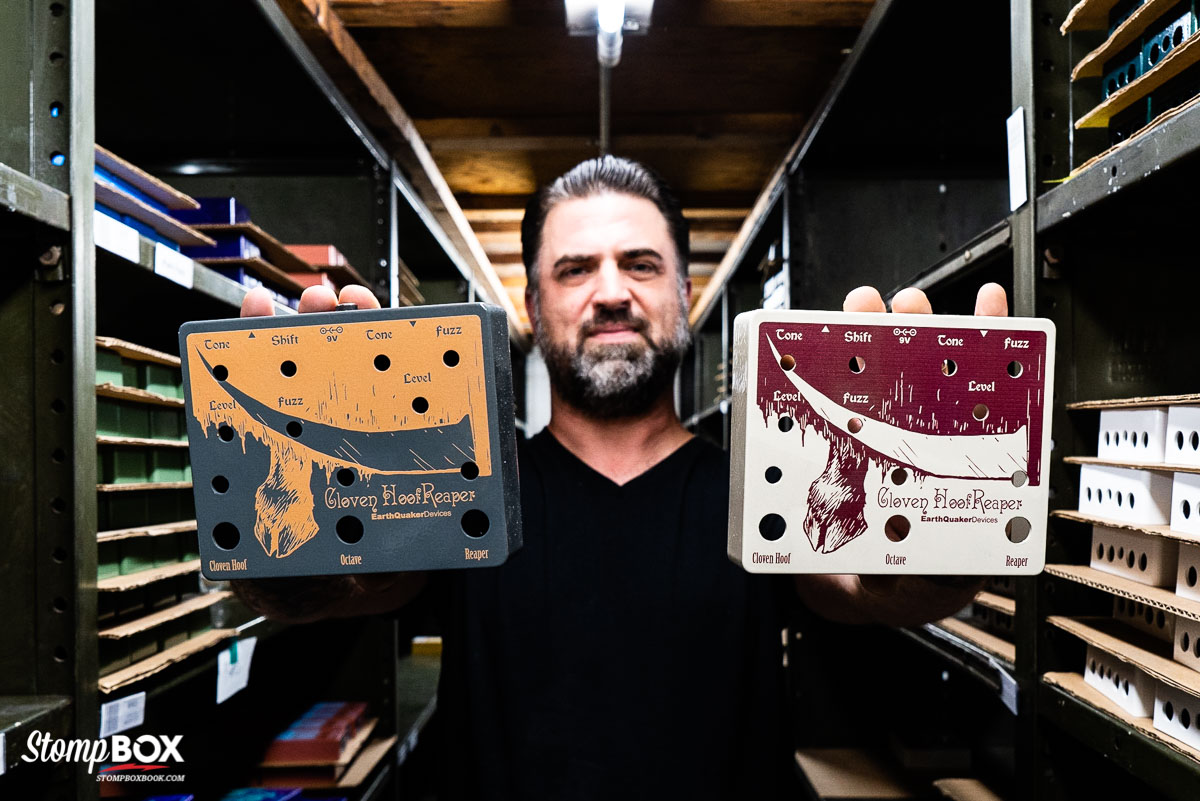
I don’t necessarily think the term “boutique” applies. Boutique is just a term for what people would assume isn’t mass produced.
Did you start getting real orders once that video was posted with the Black Keys?
Yeah. I wouldn’t say that it took off like wildfire or anything like that, but it generated a couple of orders off Harmony Central. Shortly after that, I put out the Disaster Transport Delay, which is different than the one that exists currently. It had a strange ramping modulation and at the time, there weren’t too many boutique delay pedals, especially ones with modulation. I feel like that’s the one that people really took interest in. It was just me building pedals and selling them at the time. The Disaster Transport was such a chore to build that eventually I discontinued it because it was so popular. I couldn’t keep up with the orders, and it hurt to make [laughs], just sitting there for 16 hours a day building those things. I could only build a couple of them a day.
At that point, the company was still just you?
It was just me for the first five years. Occasionally, my wife Julie would help out with enclosure assembly after she got home from work. I eventually built up a tolerance for how long I could sit there and developed different ways to make building pedals easier on me. I didn’t bring back the Disaster Transport until I hired an employee, and that’s the first thing I did when I brought in another person to help build full-time.
How has the pedal scene changed over the years?
When I started I felt like I could name every company. It’s definitely a bigger scene. I don’t necessarily think the term “boutique” applies. Boutique is just a term for what people would assume isn’t mass produced. We all grew to a size where I don’t view us as a specialty item or a niche market or anything like that. But the term still applies for some reason. Bigger companies will post things in their descriptions like “Boutique quality parts,” and I don’t know what it means any more.
But you still make your stuff by hand?
I think that’s one of the biggest differences with us and a lot of other people. We’re just an overblown version of what EarthQuaker started as, which was me smoking cigarettes in my pajamas building pedals. Now we’re just in a big shop and no one is smoking cigarettes.
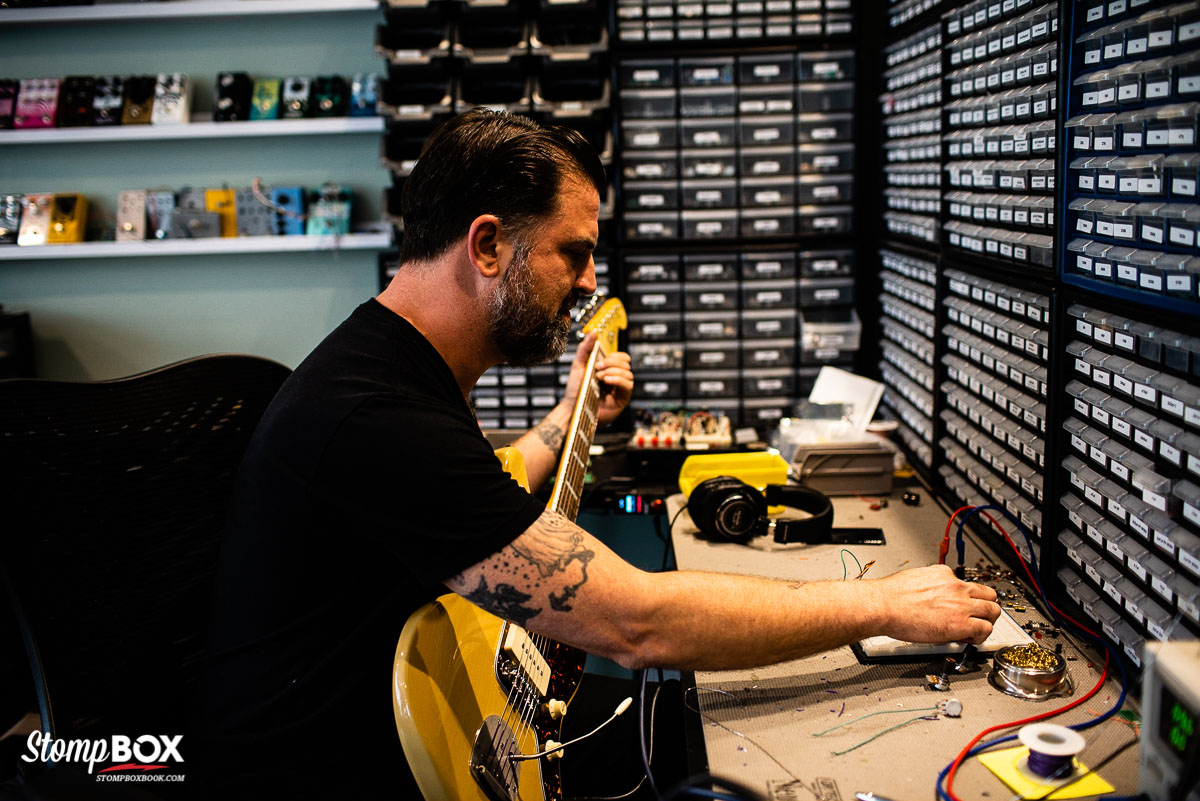
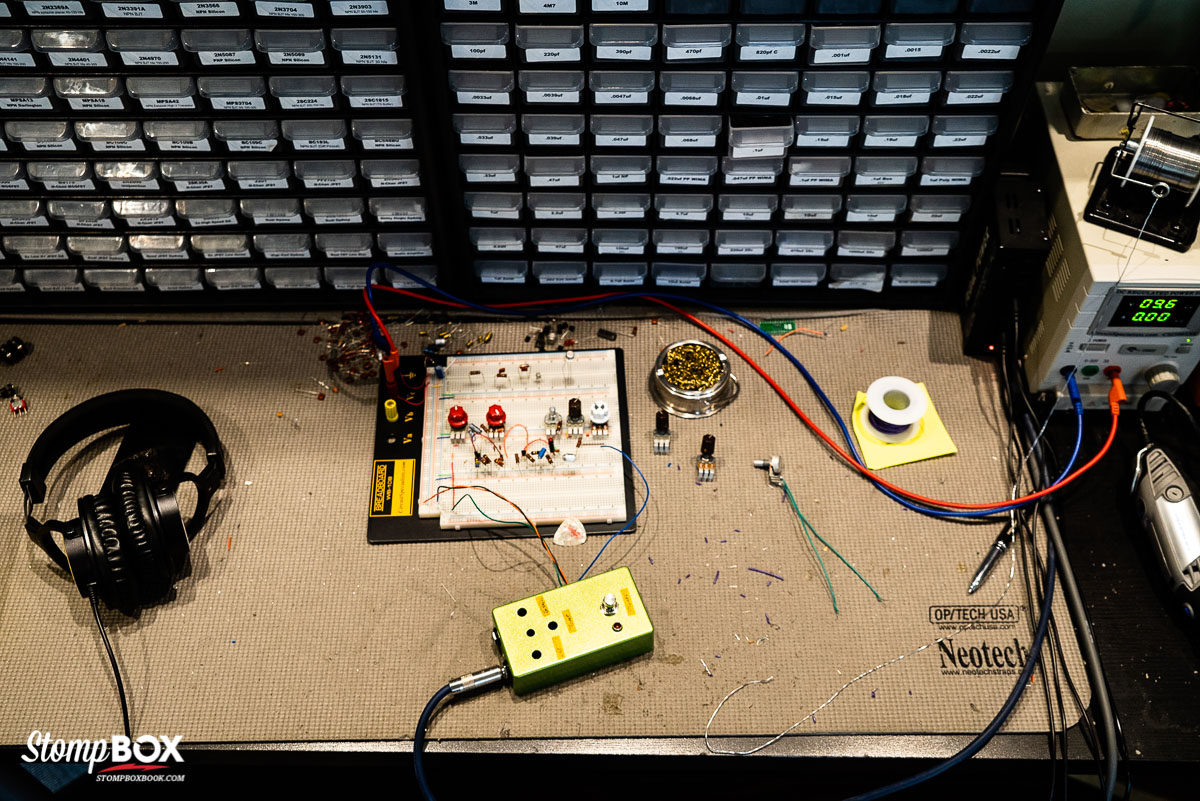
But still in pajamas?
Some people show up in their pajamas. Still building stuff by hand. But the real answer to your question is that the boutique market exploded. There’s a million companies and there’s something for everybody. There are all-out noise pedals. There are straight up one-to-one clones. There are people who specialize solely on building classic pedals with cool parts. There are people who are pushing the envelope trying to come up with new things. It just exploded. It’s not a small under-the-radar thing anymore.
And there’s a place for everyone?
There’s definitely a place for everybody. I have been reading year after year, every month, every day, “The pedal market is over saturated. There’s no room for anything. No one’s doing anything original.” It’s bullshit. I mean, of course there’s going to be a jumping off point where maybe sales are going to slow across the board. But happens with everything. It happens with guitars. It happens with computers, phones. It’s not like Bisquick has the run on the pancake market anymore. Everything levels out at some point. But they’re still around. I certainly think there’s more room for a million more pedal companies.
Are there any circuits that you gravitate toward?
I am a big user of the FV1 processor,. That was like the last major advancement that I can think of in the boutique pedal industry. That made it so a company of one in a basement could come up with polyphonic pitch shifters, real crazy delays, and reverb effects very easily. We were an early adopter of it. When we first used it in the Dispatch Master and Rainbow Machine, I really think there was only one other company using it, and that was Electro Harmonix. And now, everyone uses it—and that’s not an exaggeration. I am still a big user of that part. It’s all digital, but it has a very pleasant sound if you clock and filter it right. I lean on that a lot. I also go through these vintage-inspired phases. I’ve been in a big one for a couple of years now, where I am relying heavily on dawn-of-guitar-effects circuits like Fuzz Faces and Tone Benders and things like that. Transistor-based things. A lot of that is using garbage parts, old carbon composition resistors, and paper and oil caps. Things that when people open up a pedal nowadays, they look at it and it makes them ooo and ah. But they’re terrible specs, they’re continuously deteriorating over time. And there’s something about that that I find pleasing.
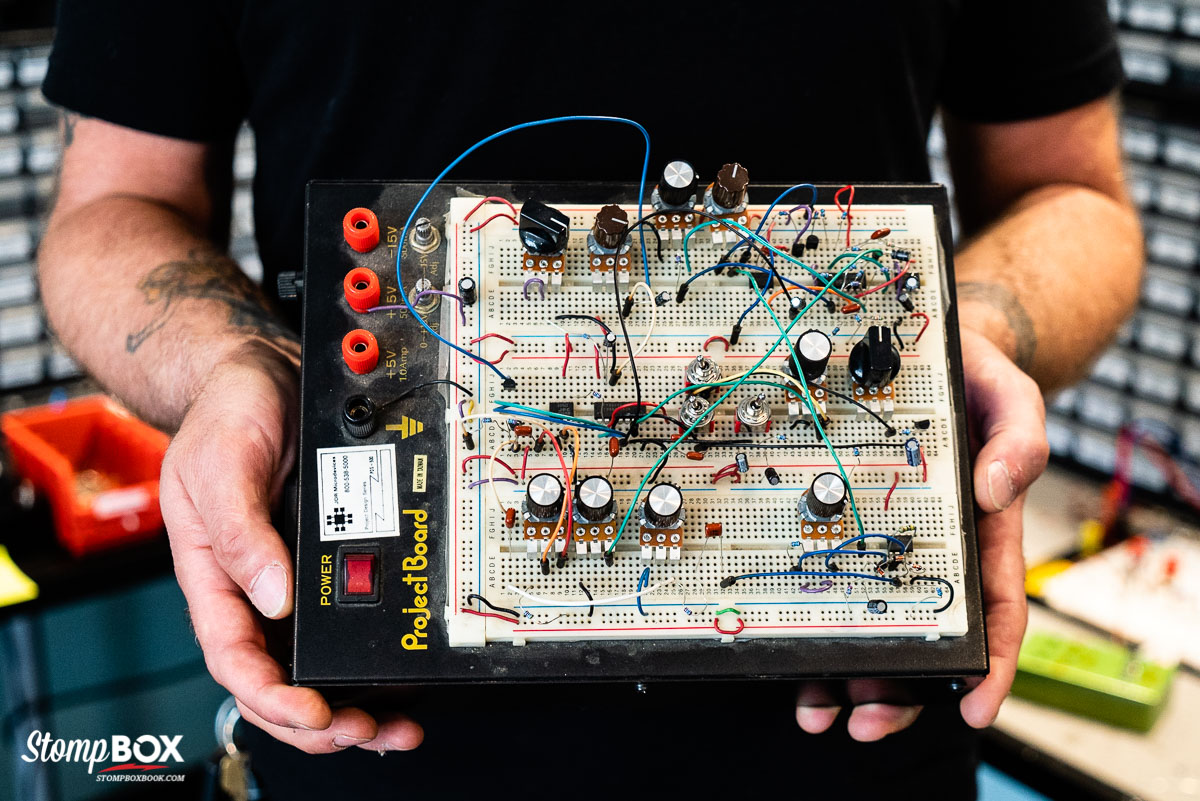
Right, but you’re not a purist, it doesn’t have to be an analog path.
Absolutely not. I would say I am a purist and highly conservative when it comes to the kind of amplifiers that I’ll use, or the kind of guitars that I like, but not when it comes to pedals or designing things like that. I use digital technology, and I use it a lot, but I like it just to be user friendly, I like everything to be right there in your face. No menu diving. No manual necessary. I am not a huge fan of things that do multiple things—like a reverb that does chorus and flanger and phaser. I like it to do one thing and have something unique about it that keeps it interesting. But it should always be musical. I think that is the overriding theme, personally, when I make anything. It always should be musical. And that term, “musical,” means something different to everybody. I am only speaking for myself. That’s how I design stuff. For me. What is it that I think is cool.
How important is the artwork? Is it ornamental or do you think it needs to convey to the user what the pedal sounds like?
Both. Being a graphic designer, it was always important to me that things look good. That they look like you want to pick them up and play with them. In the early days of EarthQuaker, there weren’t many pedals that looked like that. Now it’s a given that if you buy a pedal that it’s going to look cool. We have strict guidelines.
You have a specific aesthetic?
Self-imposed guidelines. Even if I think that something would be better, we stick with one color on one color. The same kind of format for every pedal. The name of the company is always in the same place. The name of the pedal is in the same place. It always has that box around the knobs. That’s an aesthetic choice, just branding. We strayed a couple of times, but it’s usually because it’s something like the Levitation Reverb. That was designed for the Levitation Music Festival in Austin, Texas, so we used their font for the name of the pedal for a long time.
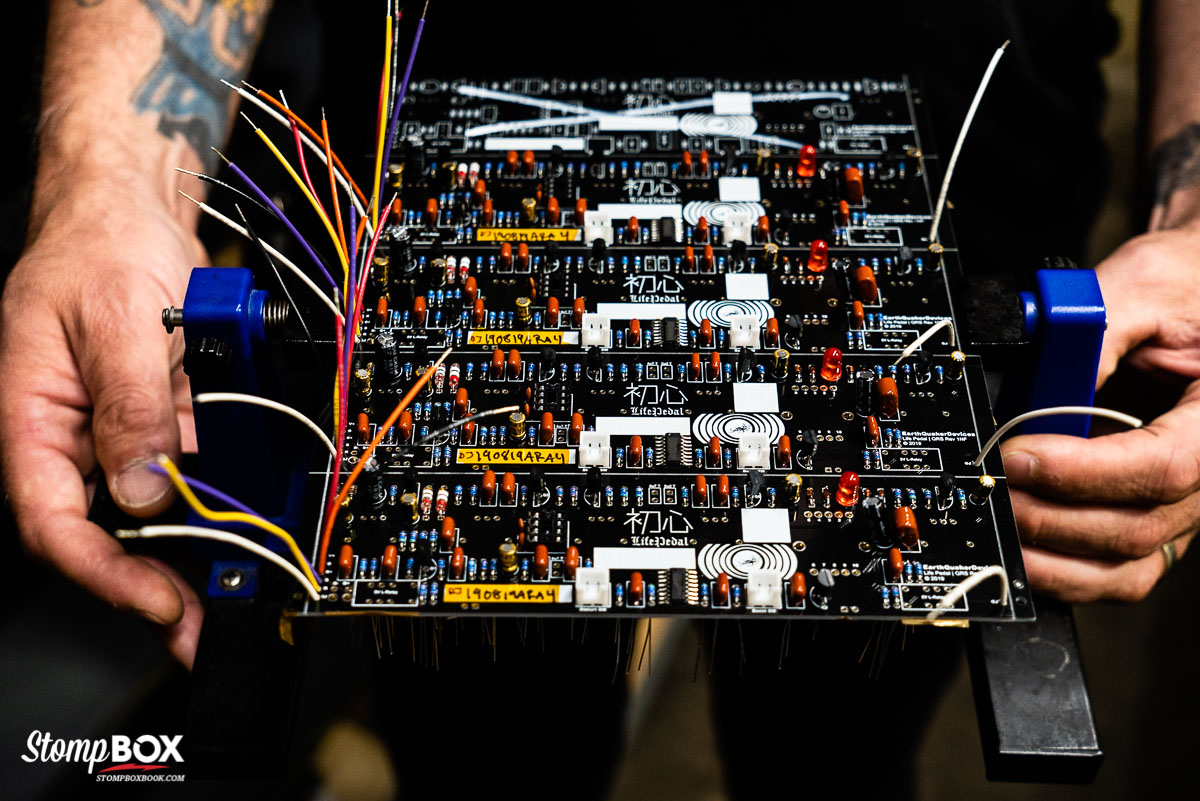
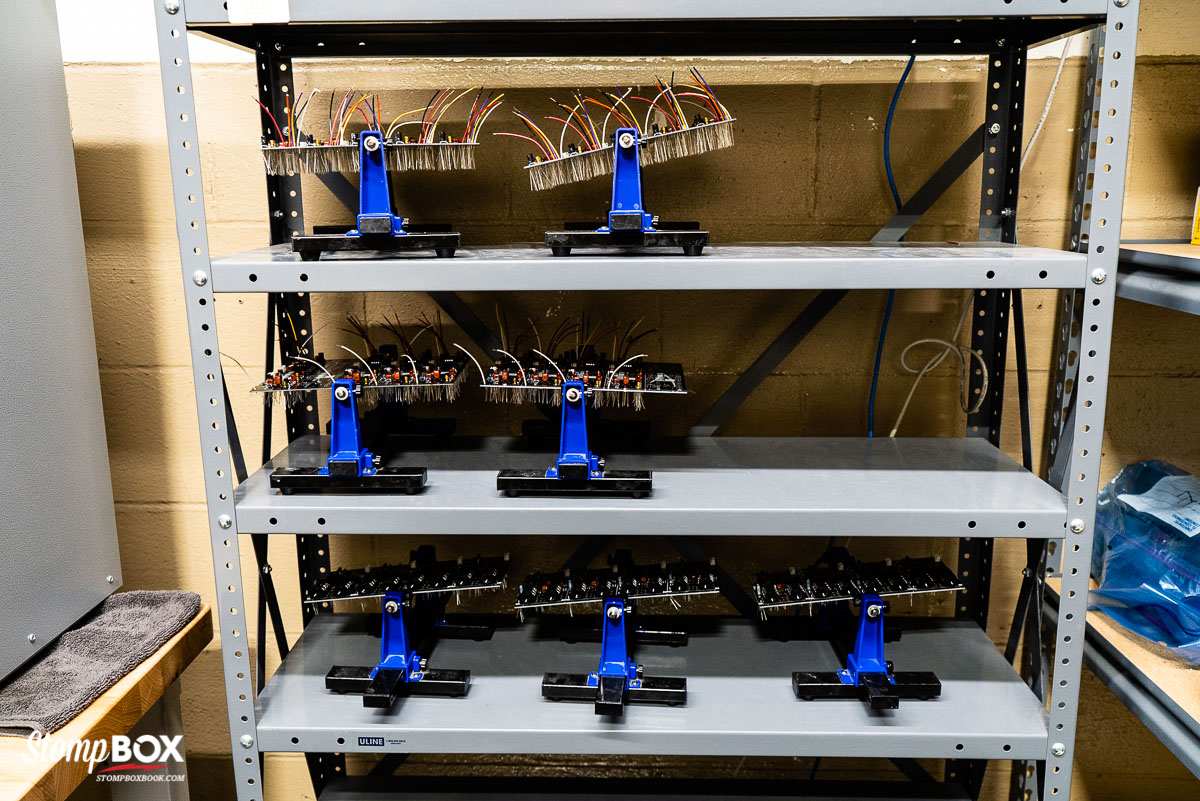
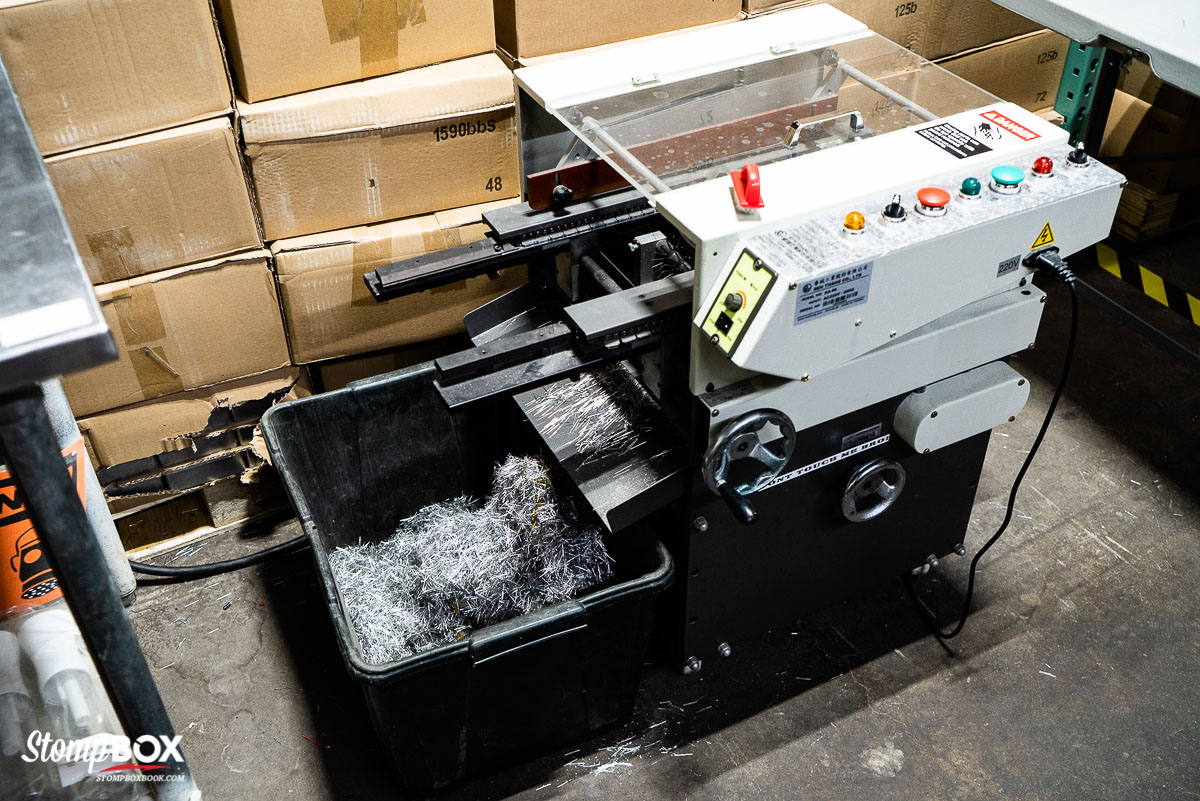
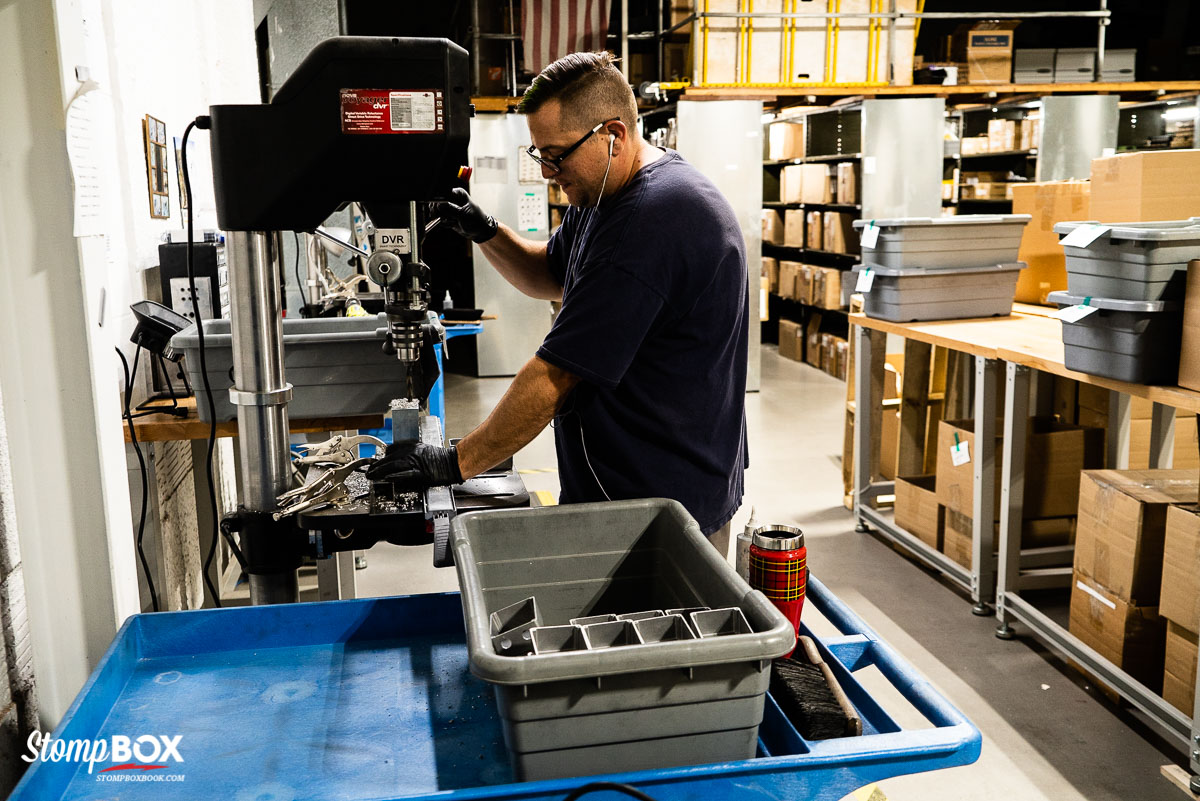
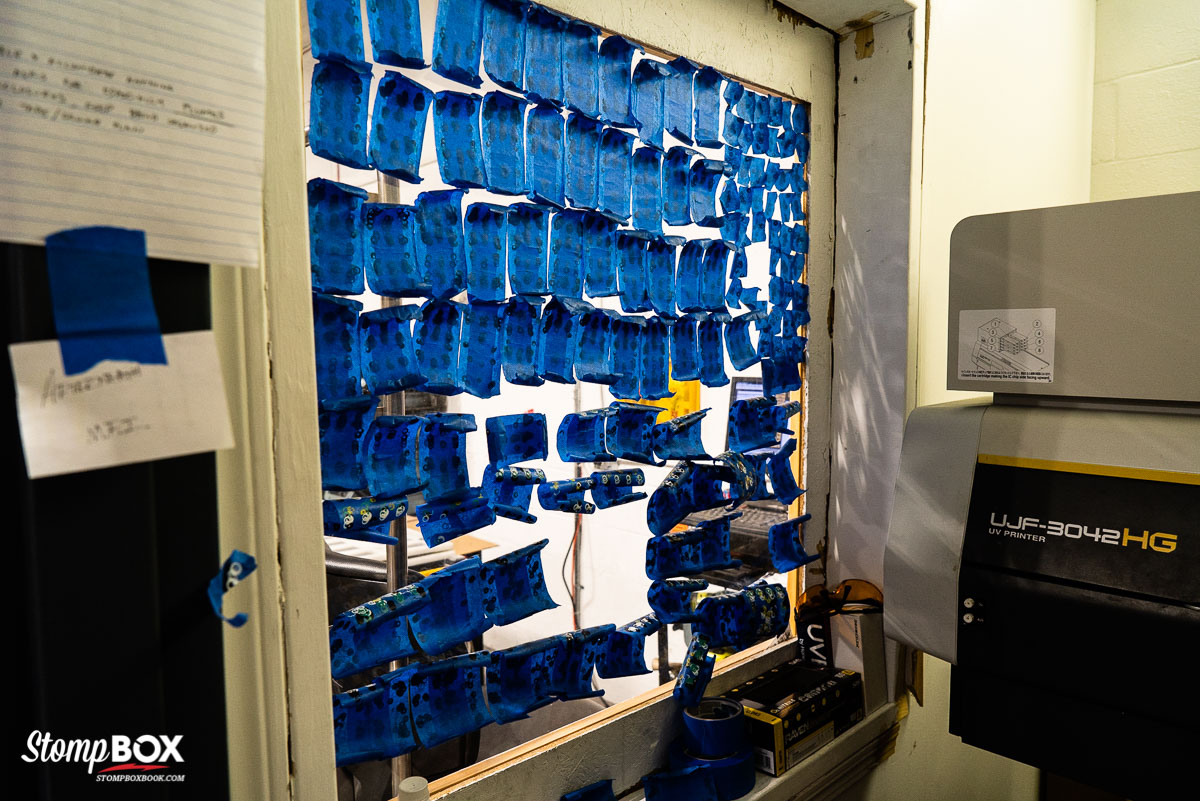
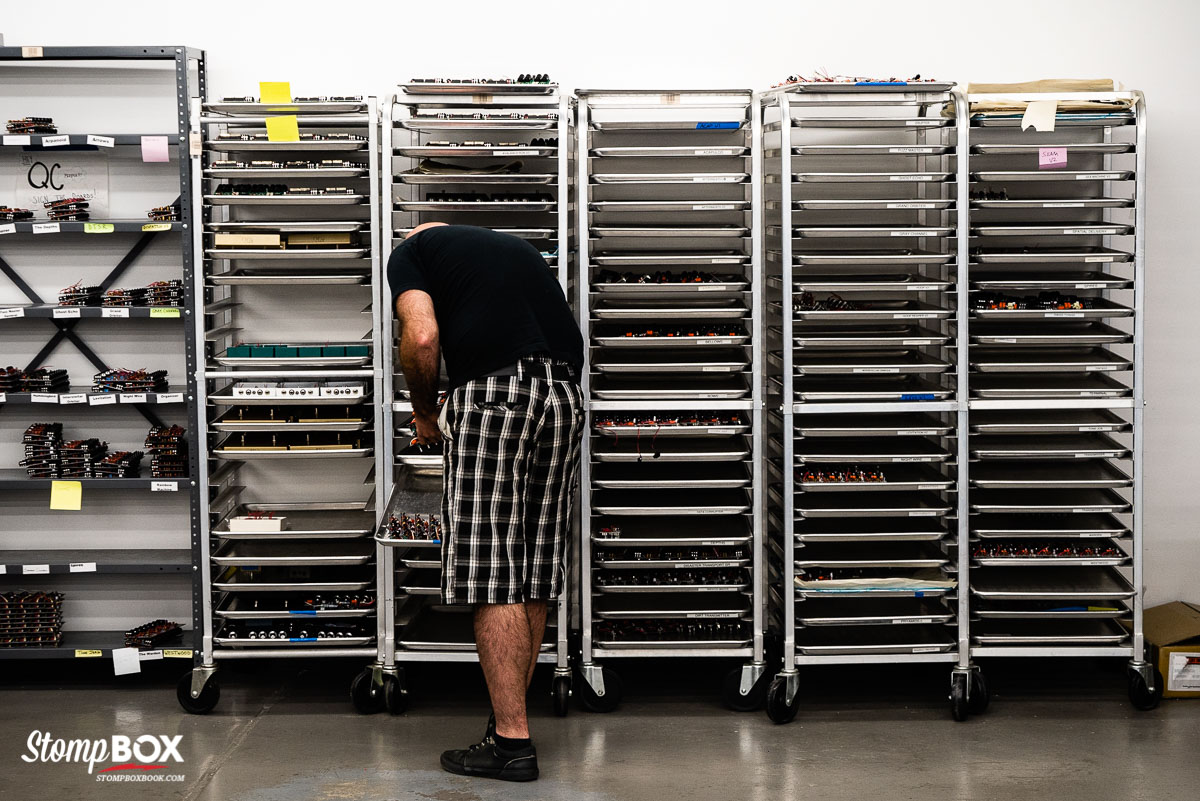
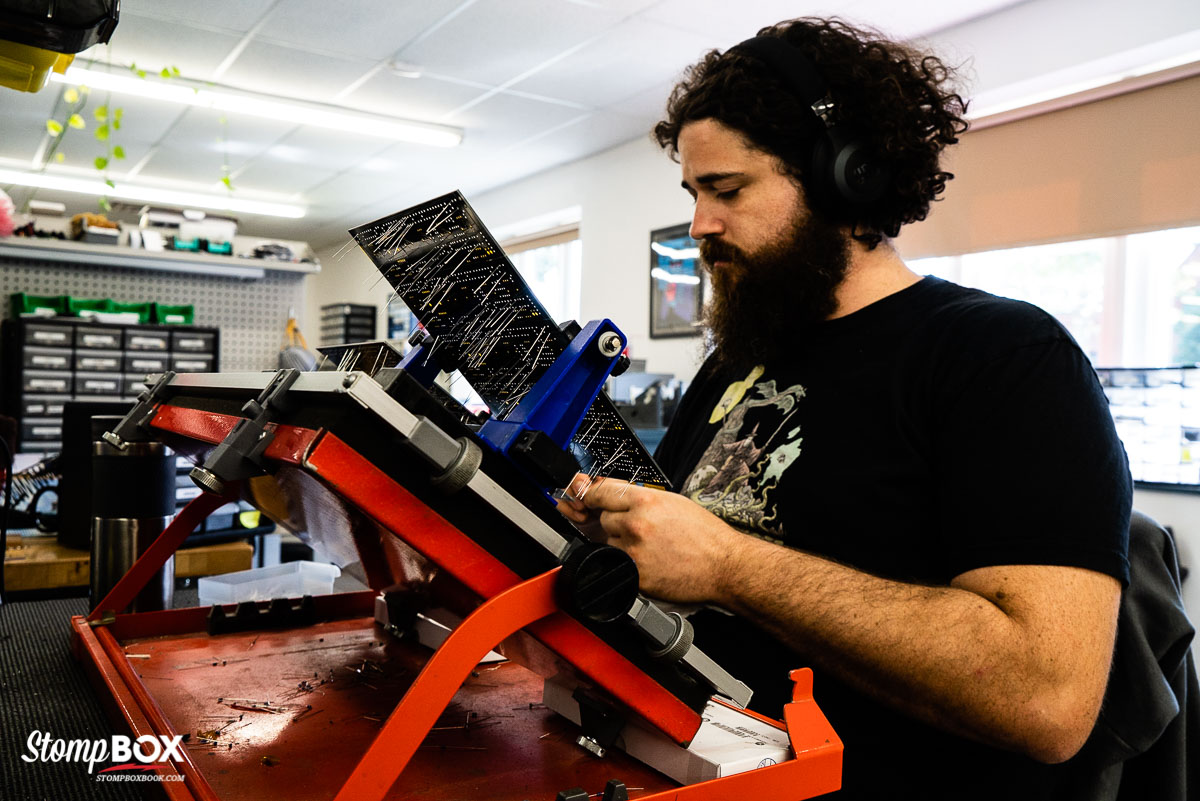
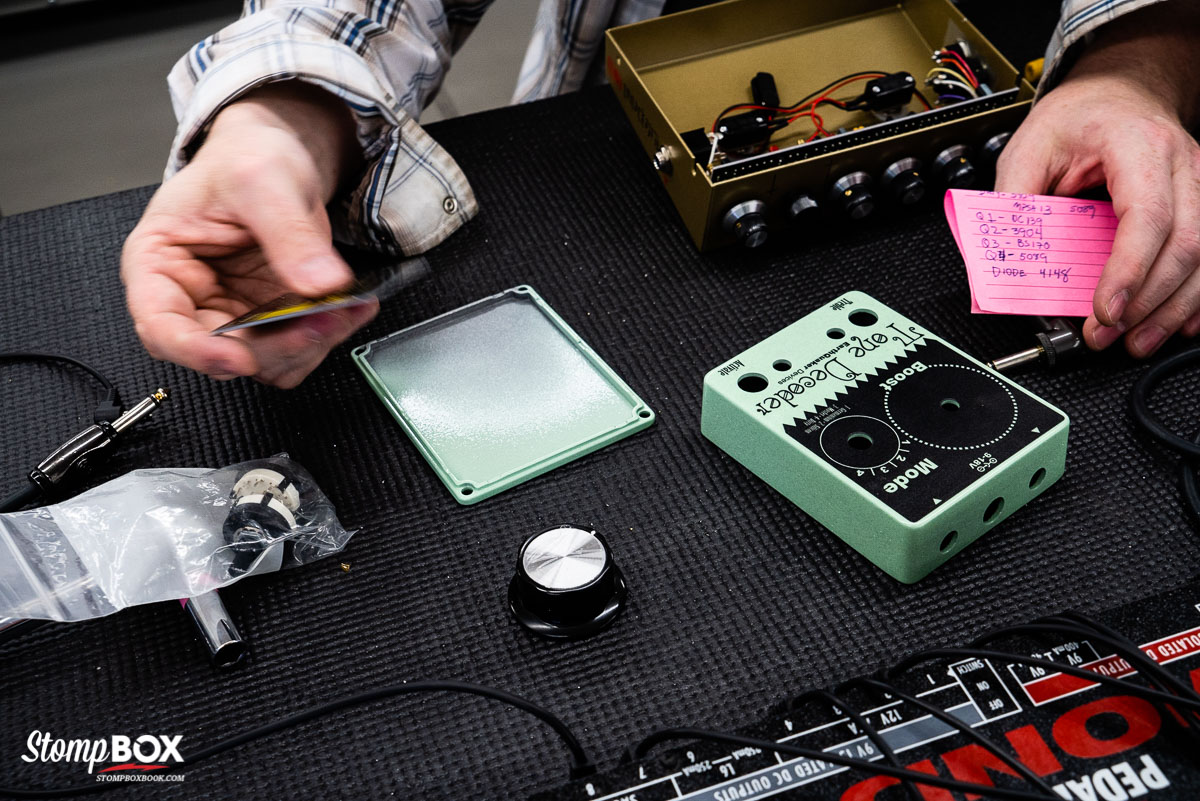
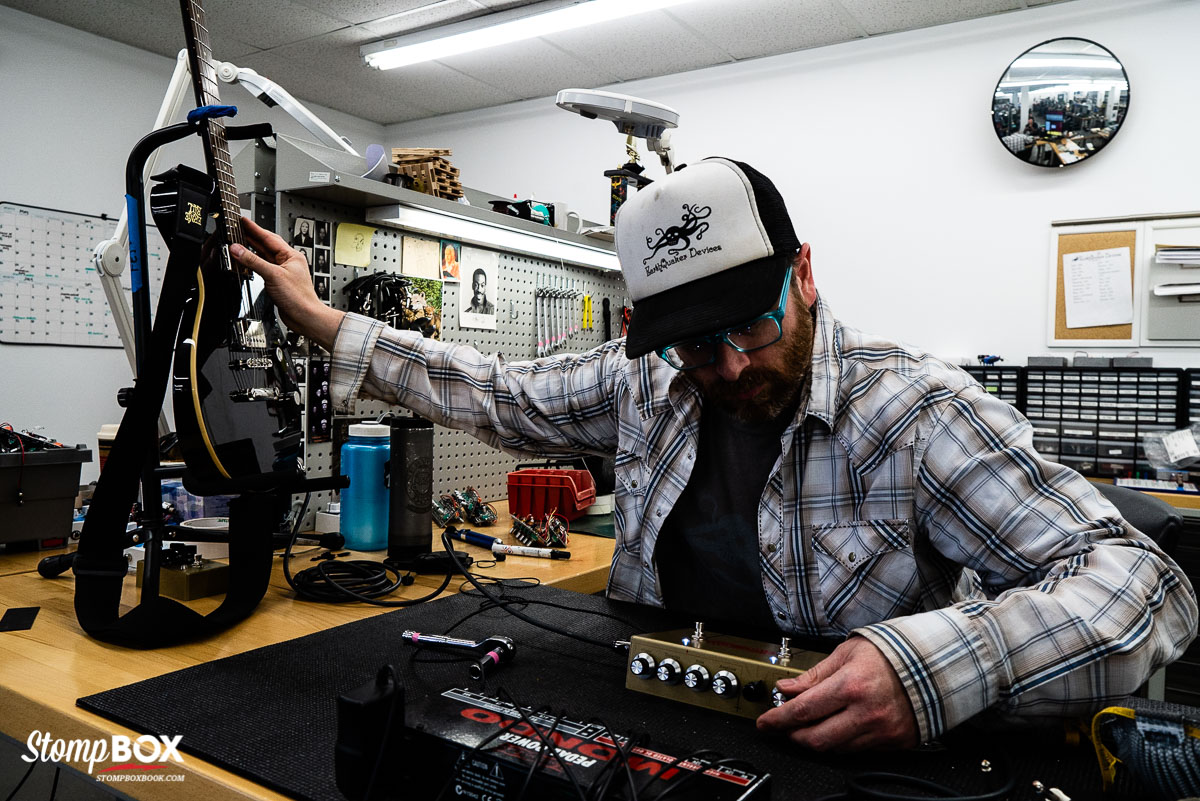
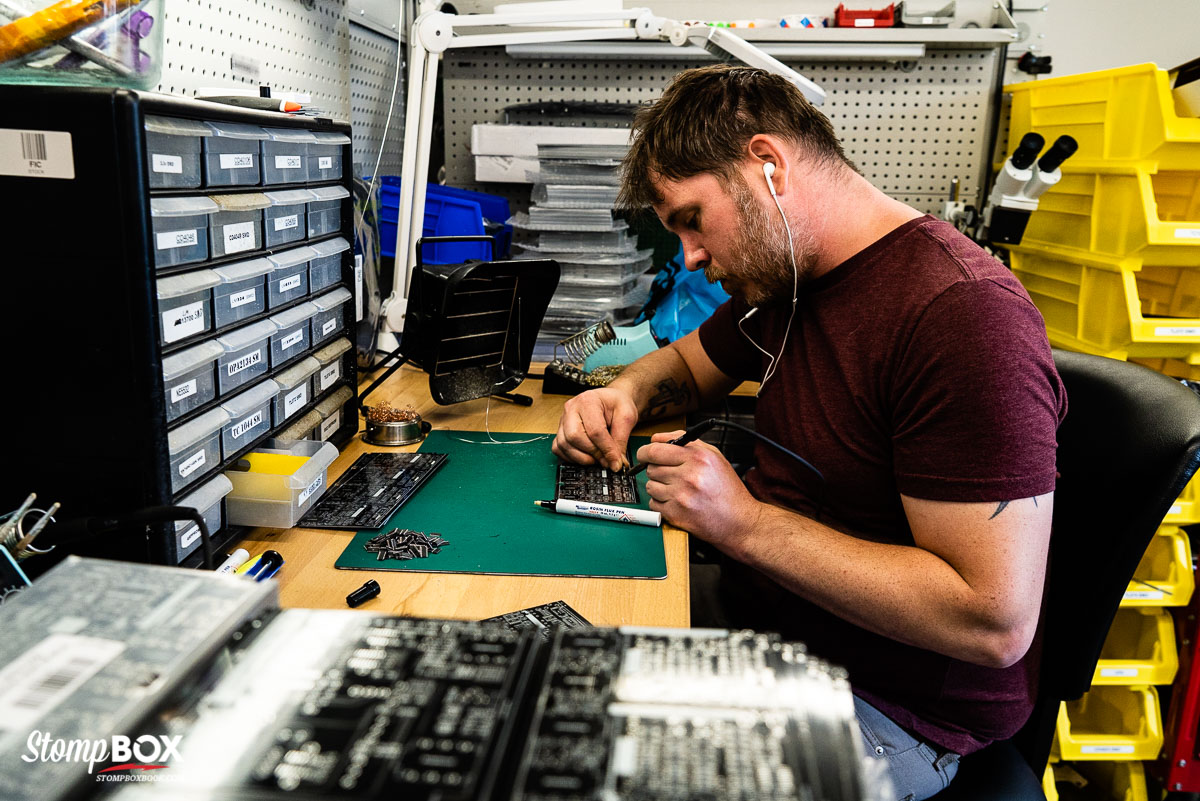
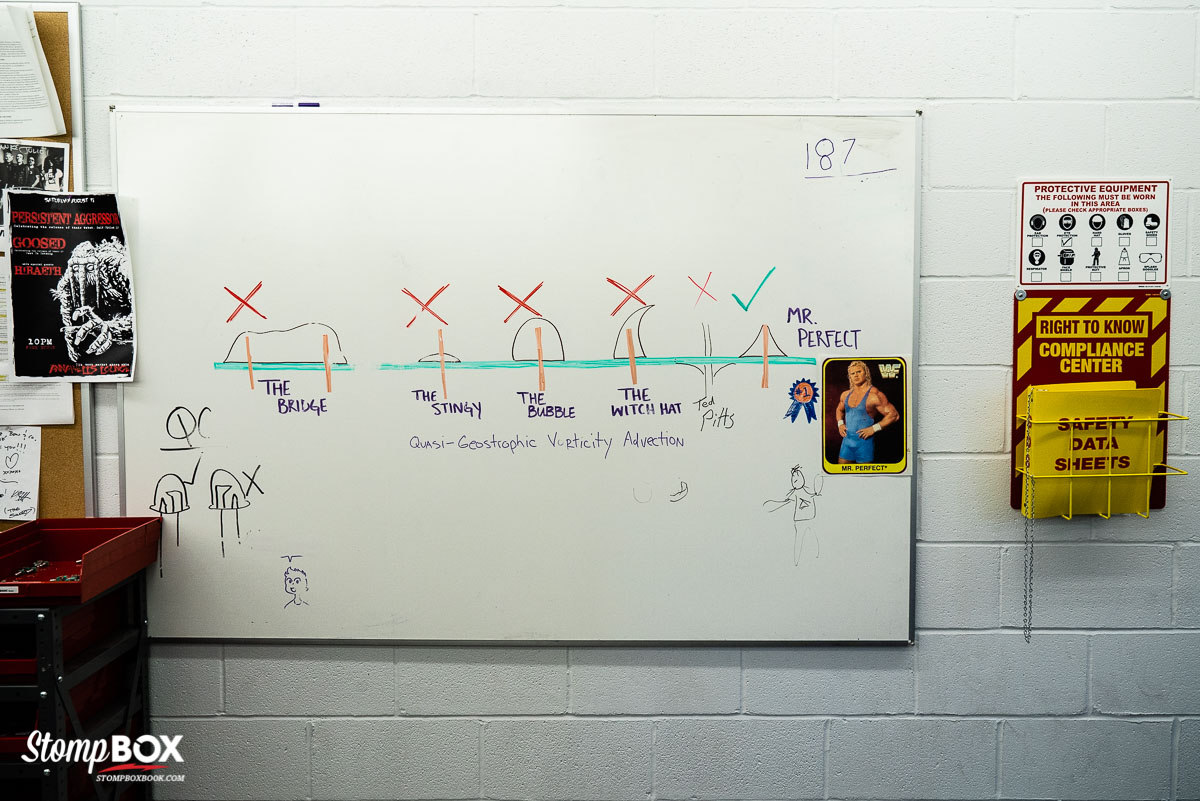
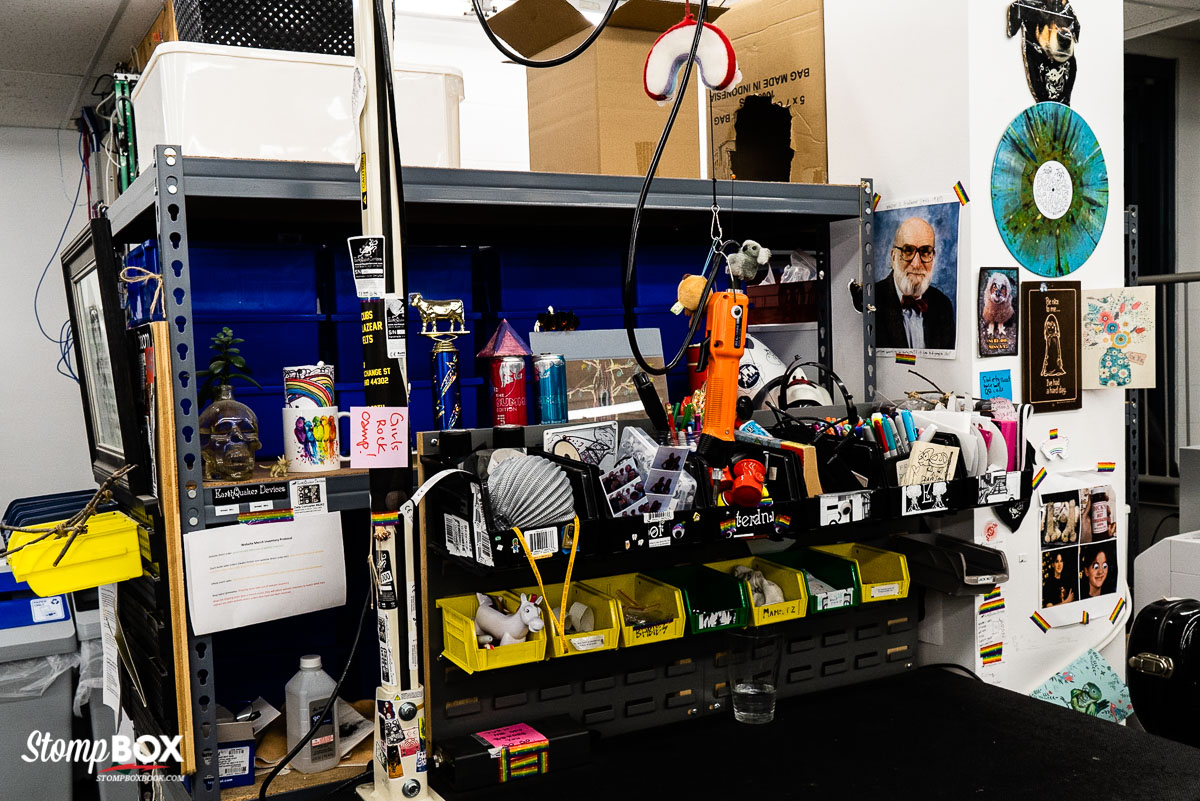
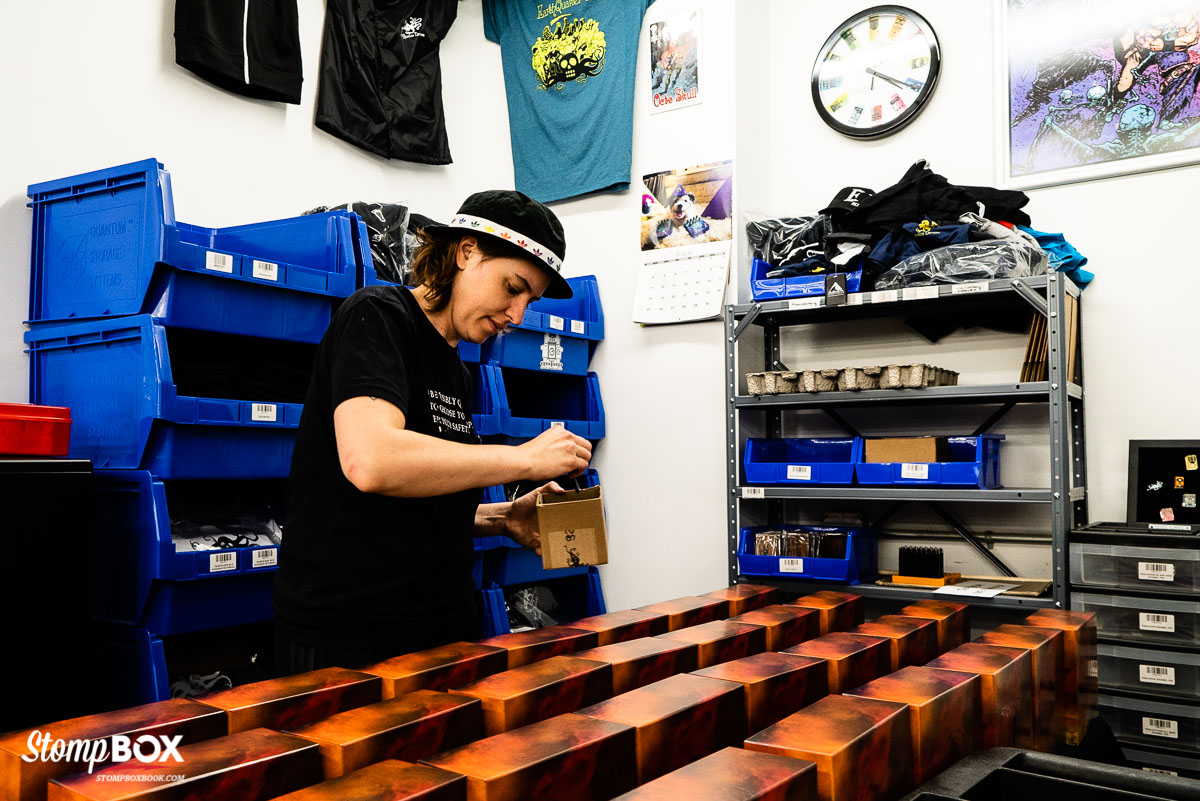
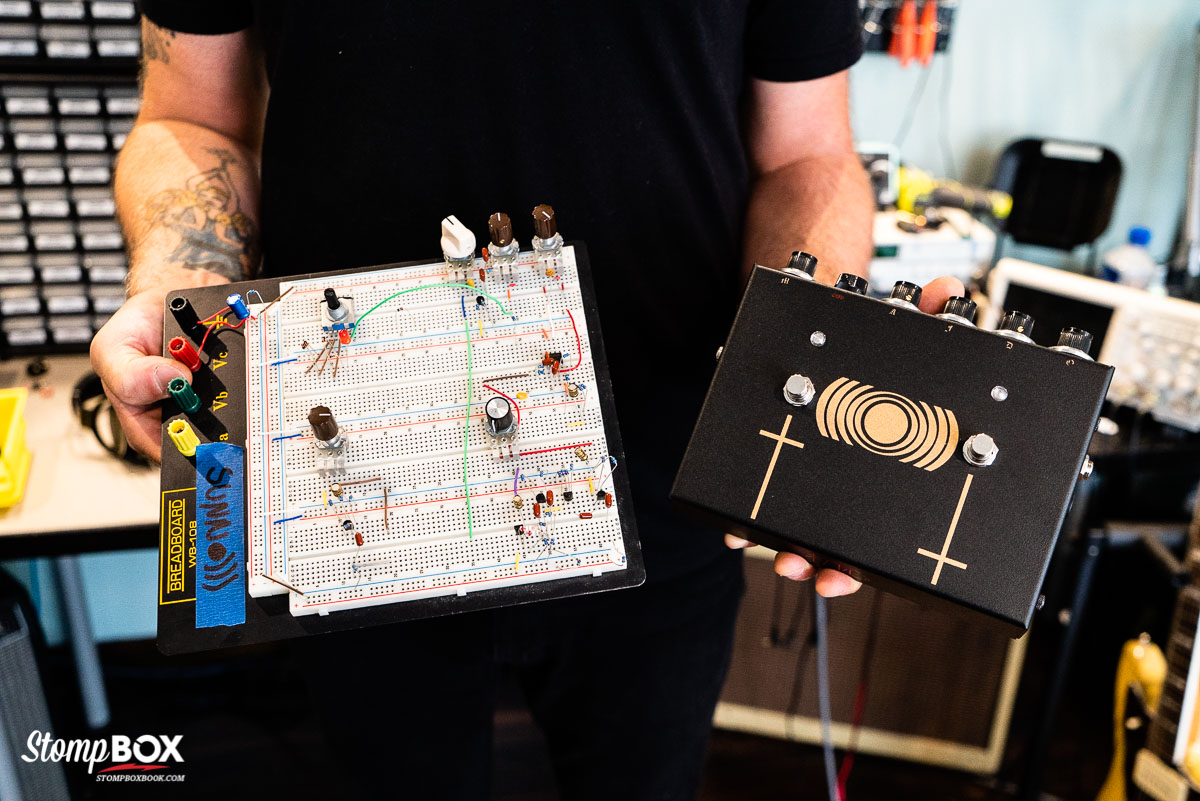
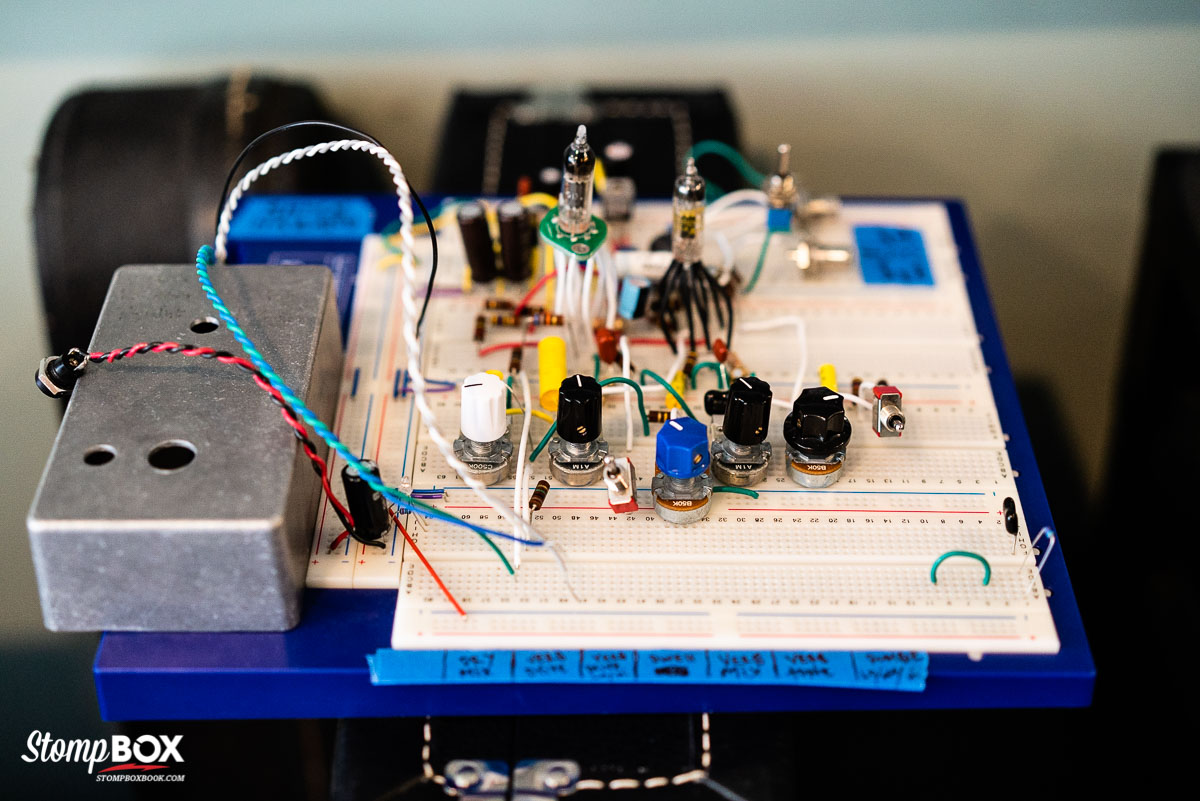
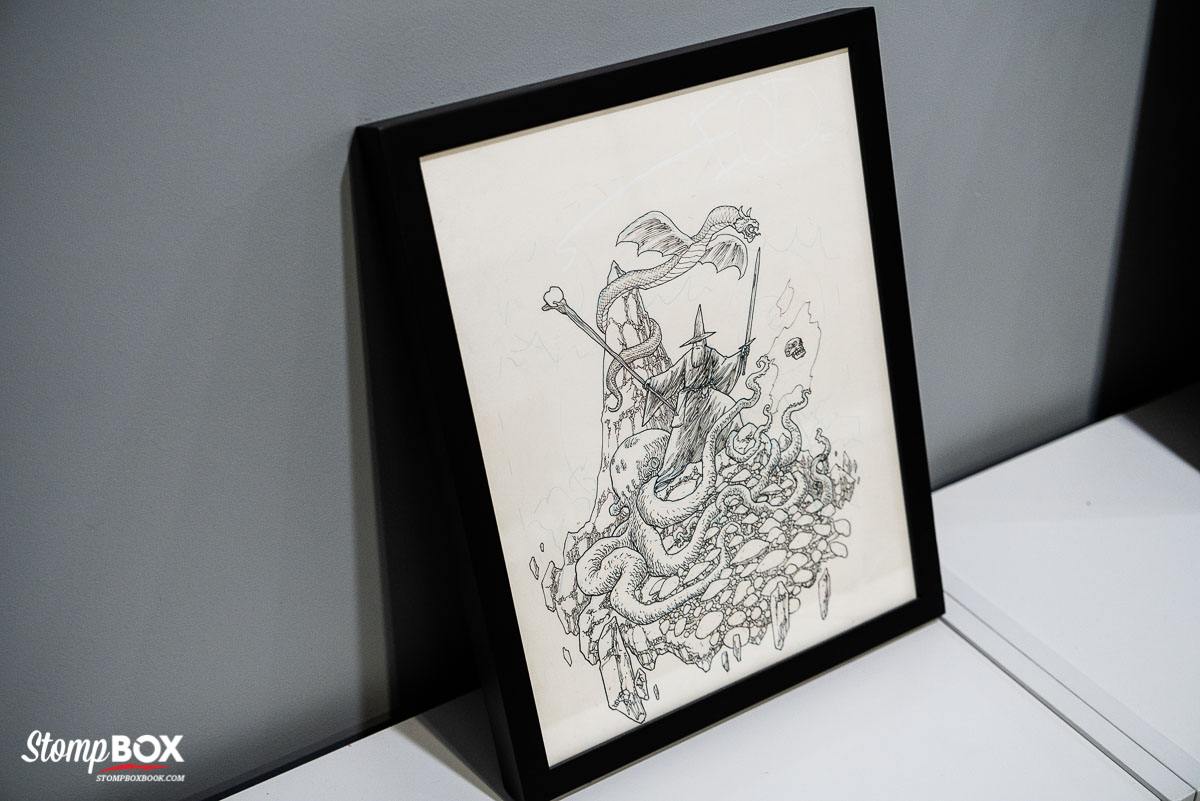
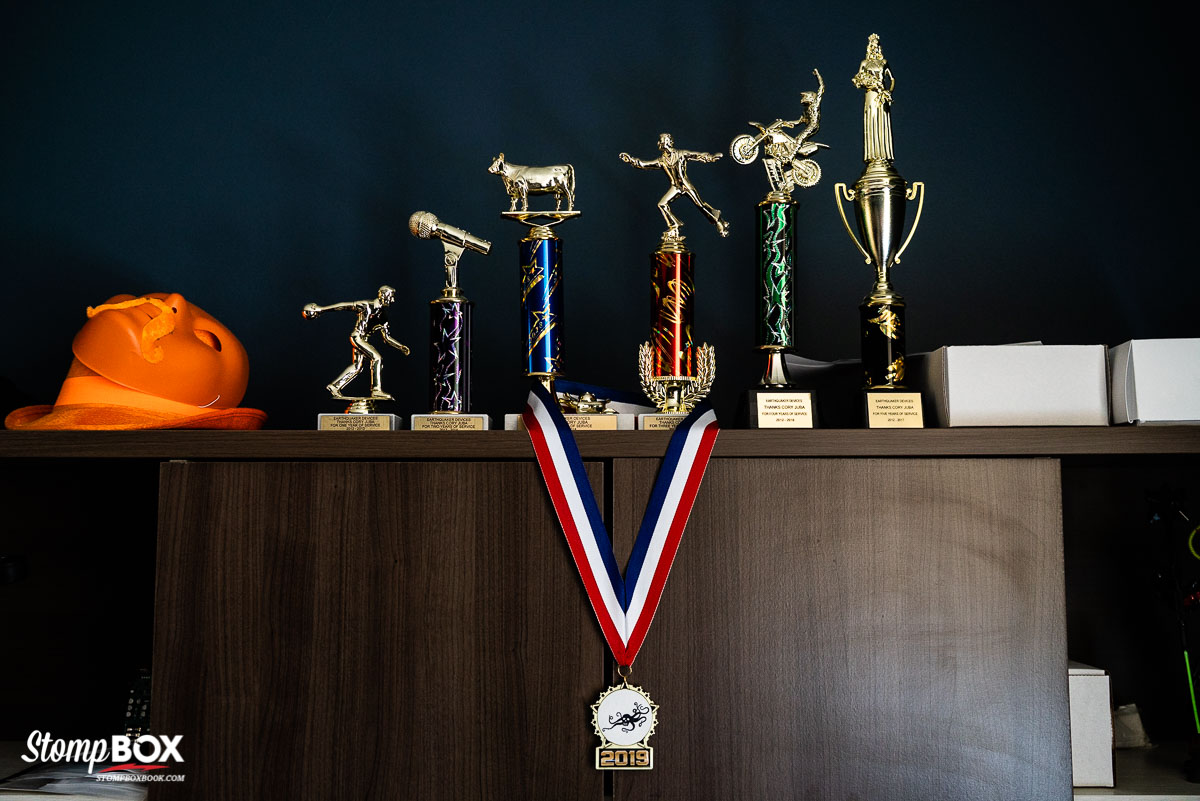
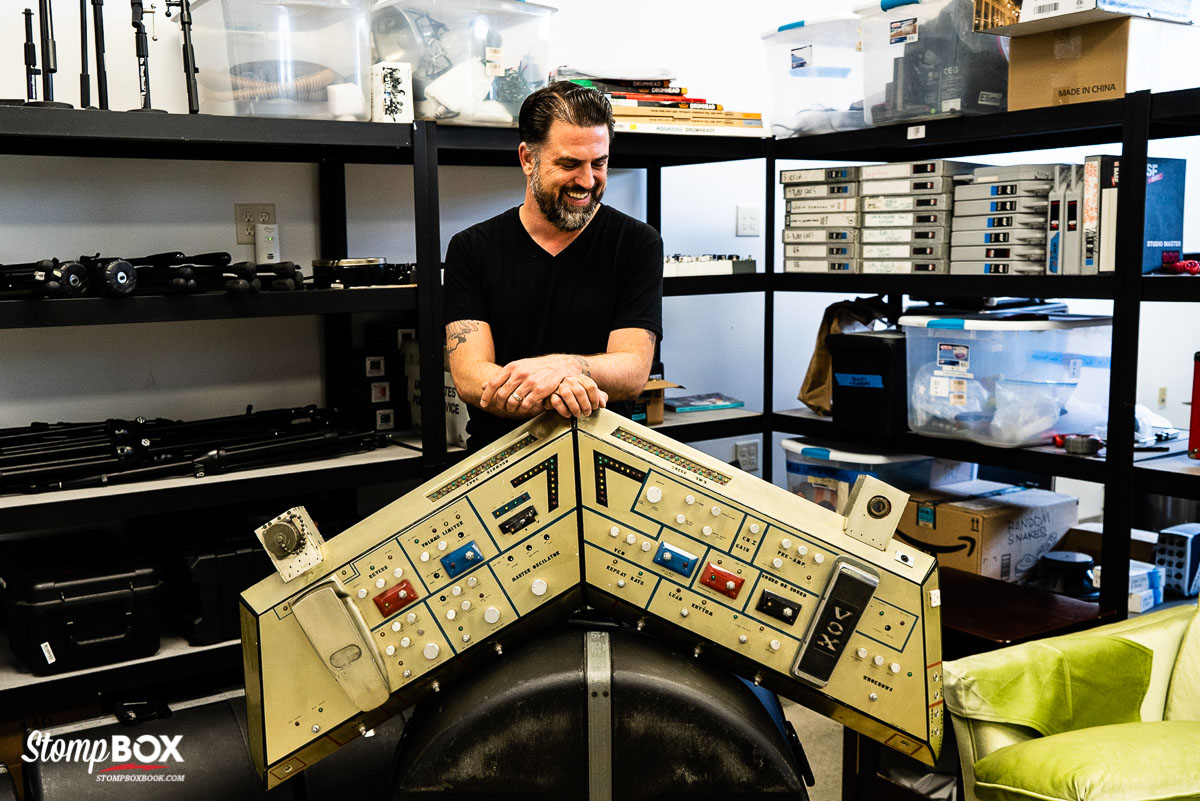
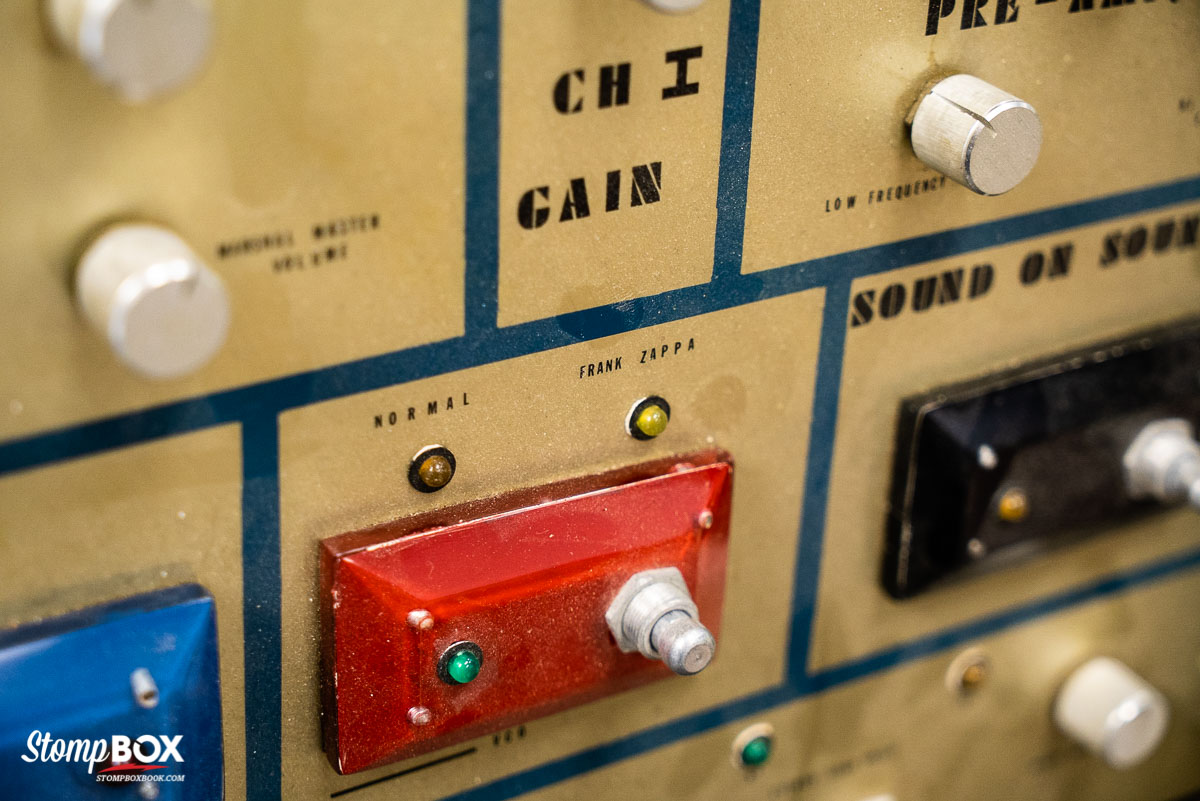
More exclusive content from our interview with Jamie Stillman will be featured in the Stompbox Book, coming summer 2020.
Get on our newsletter for book updates.
